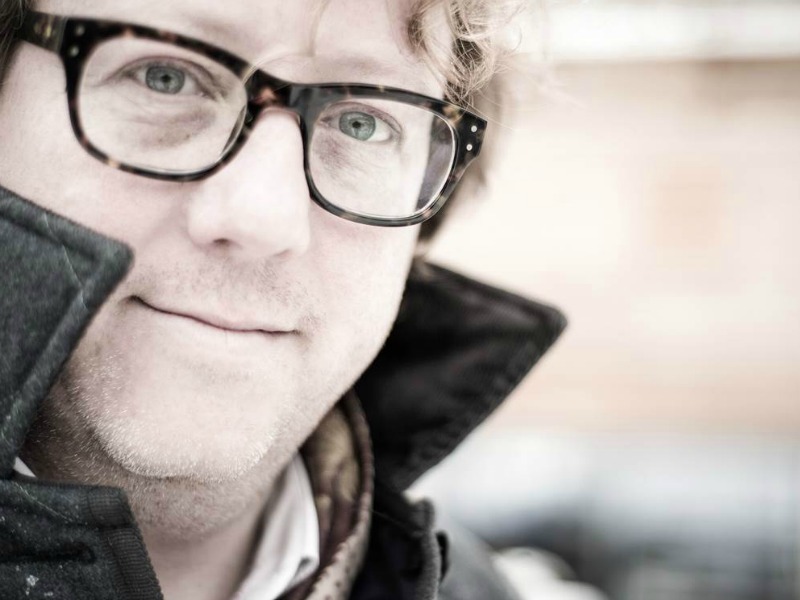Hill+Knowlton Strategies 01 Jul 2014 // 11:06AM GMT

In 1991 I was on a small island called Koh Samui in the Gulf of Thailand; at the time there were very few travellers on the island, it was like paradise. I met a man with a parrot, swinging in a hammock who talked of an even smaller island called Ko Pha-nyan. For a few baht, we could go there with a local fisherman who would drop us off on a Wednesday andpick us up the following Sunday. Off we went exploring the new. When we climbed out of the open topped fishing boat onto the beautiful virgin beach there were two old friends suppingbeers. Two old friends who were on the same university course as me. What a coincidence?
In 1994, I was walking through LAX with my then girlfriend; she was studying medicine at Edinburgh University. She had flown over to meet me and to spend the summer in California.While we were walking through the airport we spotted someone she knew, a guy called Alex who also studied medicine at Edinburgh and who had also decided to spend the summer in the US.
I now live in a small village in Buckinghamshire, about 15 miles from Oxford and a 45 minute train journey from Marylebone. We sold our house in Tooting Broadway in South West London to move there. My parents live in the North West so it made sense to head out that way. Living opposite us in the village is a family from Southfields and two doors down in a thatched cottage is a family from Tooting Bec. Our children are at school together and theirparents also live in the North of England.
What are the chances you might say of these chance encounters around the world, of people from similar backgrounds gathering in the same small village in Buckinghamshire? Actually, it would seem those chances are quite high. In science they are called ‘multiples’and history is full of them. People having the same ideas at the same time.
One of the first comprehensive lists of multiples was put together by William Ogburn and Dorothy Thomas, in 1922.Ogburn and Thomas wrote:
There were four independent discoveries of sunspots, all in 1611; namely, by Galileo in Italy, Scheiner in Germany, Fabricius in Holland and Harriot in England… The law of conservation of energy, so significant in science and philosophy, was formulated independently four times in 1847 by Joule, Thomson, Colding and Helmholz. There have been at least six different inventors of the thermometer and no less than nine claimants of the invention of the telescope. Typewriting machines were invented simultaneously in England and in America by several individuals in these countries.
You might say that these are mostly physical inventions but the list also includes Newton and Leibniz who both discovered calculus. Charles Darwin and Alfred Russel Wallace who bothdiscovered evolution. Three mathematicians ‘invented’ decimal fractions and Oxygen wasdiscovered by Joseph Priest and at the same time by Carle Wiulhelm Scheele in Uppsala.
Ogburn and Thomas concluded that the sheer number of multiples could mean only one thing. Scientific discoveries must in some way be inevitable, products of intellectual climate of ascientific time and place. Whilst I think to a large extent they are right there is another factor that must be taken into account for a large number of multiples: the economic climate was also right and the commercial landscape demanded innovation. Add these things together and one might say the ideas are in the air, they form when the conditions are right and hang there waiting to be caught.
This idea is by no means limited to science alone. The pervading culture of the day also demands certain things are brought into existence, as James Hurton points out in the ‘Case for Creativity’.
The history of film records dozens of examples of multiples. ‘The Truman Show’ and ‘EdTV’ shared an identical premise, as did ‘Deep Impact’ and ‘Armageddon’ from the same year. ‘Groundhog Day’ had a twin in ’12:01’, a TV movie of the same year. ‘Lambada’ was released on the same day in 1990 as ‘Forbidden Dance’, also about the Lambada dance craze.
So, how do we make these ideas form on demand? How do we catch these ideas and form them into award winning campaigns —how do we become an award winning idea catcher?
We first must do our homework. Insights can be orchestrated if we know the right questions to ask, the problems to solve and understand the cultural landscape in which we are operating. We need to ask the right questions to develop our thinking around product, brand, and category intobusiness insights and then go on to ask the right questions that help us develop cultural, societaland human insights. These insights help us ensure that whatever our solutions, they are relevantto our audience, attuned to the brand and resonate in the culture of the day. From this we canbegin to see the solution to the brand or commercial challenge and the conditions begin to becreated for an idea to form.
But how do we move from the solution to a brand’s challenge to creative ideas?
It is about being able to see the idea and being able to make the creative leap to turn what are records of facts into an idea that stands out, is noticed, remembered, generates fame and conversation and ultimately is effective in delivering return for our clients.
Creativity is the author of an idea rather than the inventor of a solution. This is the fundamental difference between problem solving and creativity. The author of the idea is able to bring to life a story that carries the message. Although there are many multiples in science there are not two Mona Lisas or two Hamlets. Creativity can help us see and catch the idea, an idea that resonates because it is culturally relevant at that time.
Catching the ideas is only the first part of the process. We then must release these ideas by creating contagious content that brings them to life and gives them real value to our audience. We need to create content that spreads through the owned, earned, shared and paid media channels. Traditional PR concentrates on the earned channels, as traditional advertising concentrates on paid, but the real test for our ideas and content is whether they are capable of spreading and being used through all media channels – these are the ideas that are most effective and in turn engage our consumers to become our advocates. These are the types of ideas that become award-winning campaigns.
So, content creation is the second key area where creativity is fundamental. This is where the creative craft comes into play. Consumers do not differentiate, excuse or value content according to its author be that the brand, media house, consumer or production company. Consumers see content as just that, and the value they attach to it is related to how sharable it is.
(Coca-Cola conducted research with their consumer, teens and young adults around things that they value. As you might expect this audience feels comfortable in the digital environment as they are natives of the genre. Through the research Coca-Cola identified that this group saw content as currency for social status and success and they attributed it value based on the number of shares, likes and comments they achieved from that content via their social network. If they did not receive the expected level of interaction they made comments like, ‘I feel like a personal failure.’ Although this is perhaps specific to this audience it is in human nature to be storytellers so the contagious nature of our content will have a direct impact on how far our ideas spread once released and the value the idea brings back the brand and our consumer.)
Wendy Clark, SVP of integrated marketing communications and capabilities at Coca-Cola, talks of eight principles based on Coke’s experiences of developing a content led, real-time communications model.
1 #beshareworthy
Ensure that the content produced is shareable and take advantage of the socially networked realtime digital world that allows ideas to spread around the world.
2 #newsalesforce
Embrace and empower your consumer and your community. Give them the experiences, content and conversations to become their stories.
3 #speedtrumpsperfection
In a real-time world you need to be able to move and iterate at the speed of the market. You need to be part of the real-time conversation.
4 #simplify
Ideas become complex very quickly. Whether that is because you are a global brand or are using multiple channels simplicity will always cut through and be more powerful.
5 #disrupt
Embrace disruption; for Coke that meant a partnership with Spotify and an equity partnership. Brands need to be open to new possibilities.
6 #nostatusquo
Do not accept the status quo. Don’t take the easy road, become relentless about pursuing new and unexpected solutions.
7 #playwell
With work that travels across channels the traditional channel definition no longer works. We need to be empowered to allow our ideas to spread.
8 #workthatmatters
This is about having a social purpose as a brand above and beyond commercial and brand.
For a truly award winning creative idea to be caught and crafted into award winning campaigns there needs to a unique set of circumstances, both in the client and agency organisation…perhaps that is why they are so rare and we always know them when we see them.
And the strangest thing of all; in 1994 my girlfriend and I had argued about spending the summer in California; I had wanted to go to Mexico, she California. After completing her medical studies,she later married Doctor Alex whom we had met in LAX.
Simon Shaw is the chief creative officer at H+K Strategies London and leads their newly formed ‘Centre of Creative Excellence’.


































.jpg)


.png)
.jpg)
















